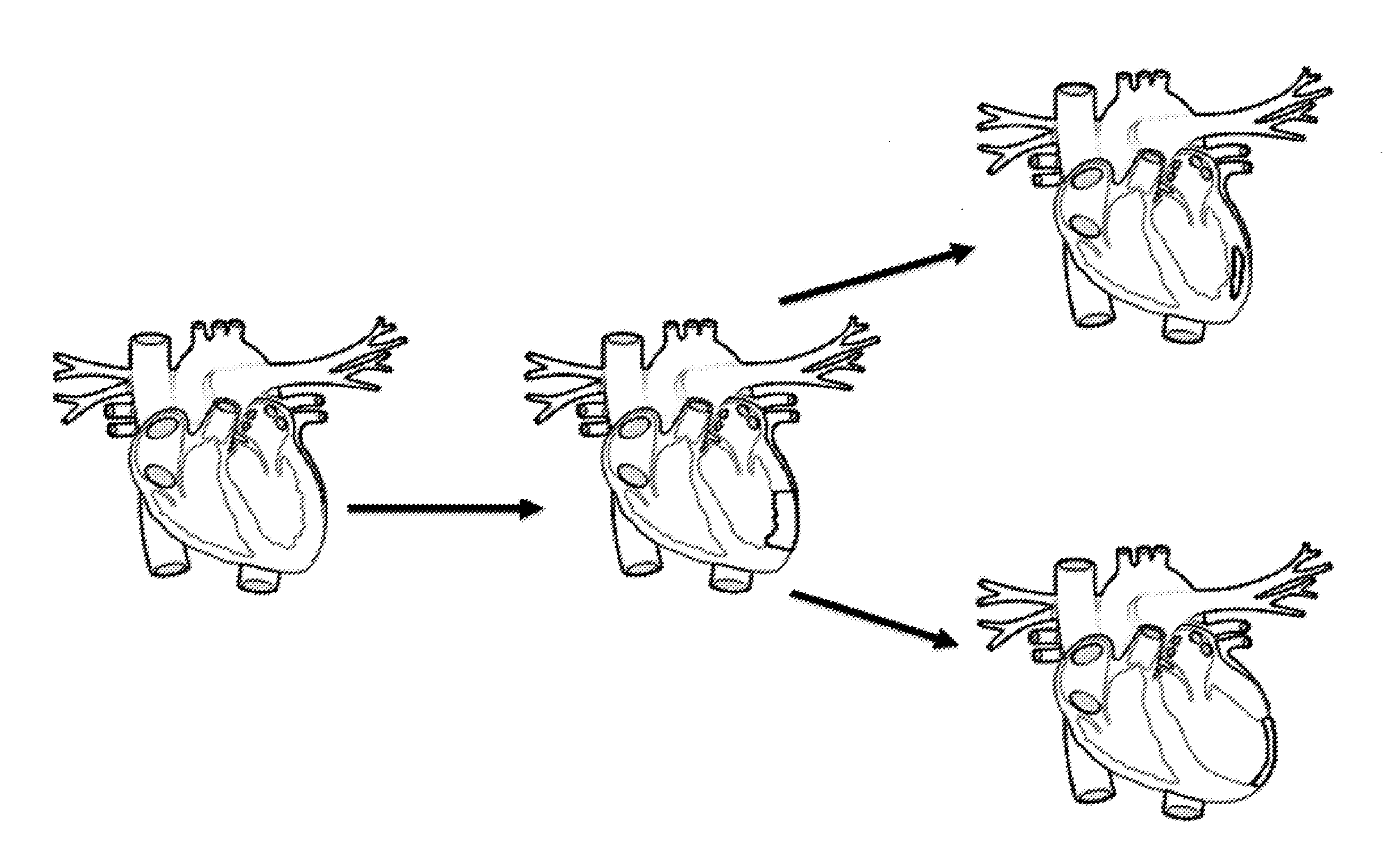Compositions and Methods for Tissue Repair with Extracellular Matrices
- Summary
- Abstract
- Description
- Claims
- Application Information
AI Technical Summary
Benefits of technology
Problems solved by technology
Method used
Image
Examples
example 1
[0098]Various studies to treat MI have investigated the injection of cells directly into the infarct wall, although many studies have shown poor survival rates. The objective of this study is to examine the use of a gel as a growth platform for cell adhesion, growth, maturation, and delivery in vivo. It is provided that a gel composed of native heart extracellular matrix tissue can aid in cardiac tissue regeneration by promoting cell survival.
[0099]Female Sprague Dawley rats were enthanized and their hearts decellularized using a procedure modified from Ott et al. (Nature Medicine, 14(2), 213, 2008). Decellularized hearts were then lyophilized, rehydrated, pulverized, and lyophilized again to form a dry powder. The ECM was then minimally digested in pepsin and neutralized, as modified from Freytes et al. (Biomaterials 29: 1630, 2008).
[0100]More specifically, adult female Sprague Dawley rats were heparinized and anesthetized intraperitoneally with pentobarbital. The aorta and pulmona...
example 2
[0109]Cardiomyocytes have been typically cultured on surfaces coated with one, or possibly a few extracellular matrix (ECM) proteins. Yet, in vivo, cardiomyocytes exist in a highly complex extracellular milieu; an ECM that more closely mimics this native environment may be beneficial for cultured cardiomyocyte survival. Here, the use of native cardiac ECM that has been solubilized as a coating for cell culture of neonatal cardiomyocytes is reported.
[0110]Hearts were removed from Sprague-Dawley rats and decellularized using a modified Langendorff setup (modified from Ott et al., 2008). The decellularized hearts were lyophilized, rehydrated, and pulverized after freezing in liquid N2. The ECM was minimally digested in pepsin in 0.01M HCl. After 48 hours, 0.01 M acetic acid was added to make the final concentration of 1 mg / ml.
[0111]Cardiac myocytes were harvested from freshly dissected ventricles of 1 to 2 day old Sprague-Dawley rats using an isolation kit (Cellutron, Highland Park, N....
example 3
[0116]Here, cell coating use has been investigated for native heart extracellular matrix of adult ventricles that have been decellularized and solubilized. The advantages being that native heart ECM may have more components than traditional cell coatings, and be more readily available for use than pretreatment with other cell types.
[0117]Hearts were removed from Sprague-Dawley rats, and decellularized using a modified Langendorff setup (modified from Ott et al, 2008). The decellularized hearts were lyophilized, rehydrated, and pulverized after freezing in liquid nitrogen. The ECM was then digested in pepsin in 0.1M HCl. After 48 hours of digestion, 0.01 M acetic acid was added to dilute to the final concentration of 1 mg / ml.
[0118]Pepsin digestion of the native heart ECM was run in vertical gel electrophoresis in reducing conditions using DTT and compared against laminin (BD Biosciences), and calf skin collagen (Sigma). Gels were stained with Imperial Protein Stain (Pierce). Native h...
PUM
| Property | Measurement | Unit |
|---|---|---|
| Temperature | aaaaa | aaaaa |
| Temperature | aaaaa | aaaaa |
| Magnetic field | aaaaa | aaaaa |
Abstract
Description
Claims
Application Information
 Login to View More
Login to View More - R&D
- Intellectual Property
- Life Sciences
- Materials
- Tech Scout
- Unparalleled Data Quality
- Higher Quality Content
- 60% Fewer Hallucinations
Browse by: Latest US Patents, China's latest patents, Technical Efficacy Thesaurus, Application Domain, Technology Topic, Popular Technical Reports.
© 2025 PatSnap. All rights reserved.Legal|Privacy policy|Modern Slavery Act Transparency Statement|Sitemap|About US| Contact US: help@patsnap.com



